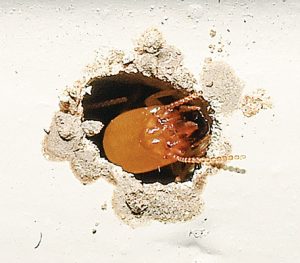
Photo: NPMA
Not only can termite callbacks be costly for a pest management company’s bottom line, they can negatively affect relationships with clients. Identifying factors that can influence the likelihood of a callback takes precise documentation and informed communication with clients.
During an inspection service, most termite warranty inspectors carefully document conditions in a structure. They include a diagram of the structure detailing the size and shape of the building, the location of damage or other evidence of termite activity, and any visual obstructions encountered during the visit. (Editor’s Note: For more about inspection documents and how to use them as a sales tool, see Ray Johnson’s March “Added Value” column.) Over time, a historical record of inspections can be accumulated; new termite activity can be identified; and changes or alterations to a structure can be recognized.
It’s obvious why termite damage should be documented: If new termite evidence is observed in areas where it previously didn’t exist, a retreatment might be in order. But why document alterations to the building itself? It’s because there are a number of changes to a structure that can have an impact on the effectiveness of a treatment and impair the ability of an inspector to detect new infestations. For example:
- Changes to exterior landscaping located adjacent to the foundation can disrupt treated soil.
- New additions or alterations can result in entire portions of the structure being left unprotected.
- Certain “upgrades” to a structure, such as spray foam insulation, can make it impossible for inspections to be completed, resulting in termite activity going unnoticed.
By carefully documenting every inspection, pest management professionals (PMPs) create a historical record of a structure’s infestation and treatment history, as well as recognize when treatment areas have been disturbed, altered or obscured. The practice provides more data for PMPs to make informed decisions. This, in turn, helps them protect themselves and their clients.
Contributor Dr. Jim Fredericks, VP of technical and regulatory affairs for the National Pest Management Association (NPMA), can be reached at jfredericks@pestworld.org.
Leave A Comment